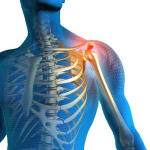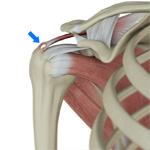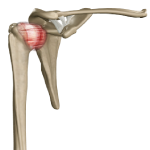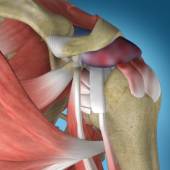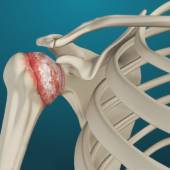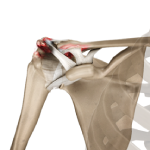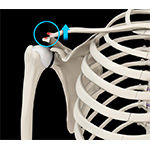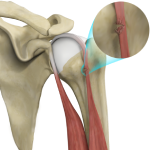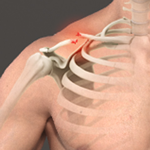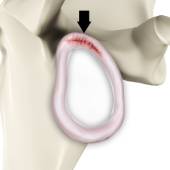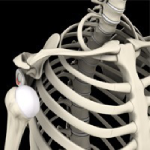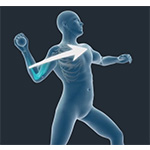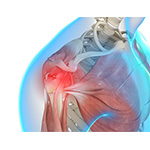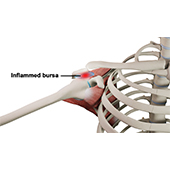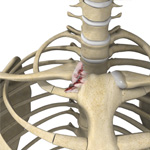- Anatomy
- Conditions
- Procedures
Shoulder Pain
Shoulder pain is a common source of pain and functional disability. It is the third most common musculoskeletal complaint in the general population. Approximately 5% of musculoskeletal consultations to GP’s are due to shoulder pain and accounts for a considerable cost to the public of NZ. The diagnosis and management of shoulder disorders can be challenging since the presentation is often delayed. Different conditions can present with similar symptoms, pathologies often co-exist, and recovery can be prolonged.
Calcific Tendinopathy of the Shoulder
In this condition deposits of calcium form in the tendons of the rotator cuff. The cause is not known, but up to 15% of the population will have calcification in their rotator cuff. We are unsure why some individuals develop symptoms in the shoulder and others do not. The condition is more common between the ages of 30 and 60 years of age and is usually painless. Most calcium deposits are small and only picked up incidentally on an Xray or ultrasound scan of the shoulder. Eventually all deposits disappear.
Frozen Shoulder
A very common condition that occurs in approximately 3% of the population. Despite this the cause of the condition remains unknown. It most commonly occurs in people over the age of 40 years and is more common in women and more common in diabetics. The good thing is that the condition usually occurs in an otherwise normal shoulder, so X-rays and ultrasound scans are often normal.
Shoulder Impingement
Also known as bursitis or tendonitis, this common condition of the shoulder typically causes pain over the lateral aspect of the shoulder and upper arm, especially with use of the arm away from your body or under load. It can also cause pain at night that may disturb your sleep.
Arthritis of the Shoulder (Glenohumeral) Joint
The term arthritis literally means inflammation of a joint but is generally used to describe any condition in which there is damage to the cartilage. Damage of the cartilage in the shoulder joint causes shoulder arthritis. The cartilage allows the bones to slide over each other without friction, enabling smooth movement.
Arthritis of the Acromioclavicular (Ac) Joint
The acromioclavicular joint is part of the shoulder joint. It is formed by the union of the acromion, a bony process of the shoulder blade, and the outer end of the collar bone or clavicle. The joint is lined by cartilage that gradually wears with age as well as with repeated overhead or shoulder level activities. The condition is referred to as AC joint arthritis or acromioclavicular joint arthritis.
Acromioclavicular (AC) Joint Injuries
The acromioclavicular (AC) joint in the shoulder is very important to support the shoulder girdle. It also assists with providing shoulder strength, motion, and maintaining shoulder joint position. The joint is stabilized by various ligaments and a capsule, which can cause pain and affect normal joint function if damaged.
AC Joint Dislocation/Acromioclavicular Joint Dislocation
A dislocation occurs when the ends of your bones are partially or completely moved out of their normal position in a joint. A partial dislocation is referred to as a subluxation, whereas a complete separation is referred to as a dislocation.
Bicep Tendon Rupture
Overuse and injury can cause fraying of the biceps tendon and eventual rupture. A biceps tendon rupture can either be partial, where it does not completely tear the tendon, or complete, where the tendon completely splits in two and is torn away from the bone.
Clavicle Fracture
A break or fracture of the clavicle (collarbone) is a common sports injury associated with contact sports such as football and martial arts, as well as impact sports such as motor racing or horse riding. It can also occur in the elderly as a result of a fall onto the outstretched arm.
Rotator Cuff Tears
The rotator cuff is a group of 4 tendons that connect the muscles of the shoulder blade to the top of the humerus bone (humeral head). They function as a unit to keep the humeral head centred in the joint, but also provide stability to the shoulder and strength with certain movements. Due to the complex structure of the shoulder joint and the stresses placed upon it, these tendons are very vulnerable to injury.
SLAP Tears
The term SLAP (superior –labrum anterior-posterior) lesion or SLAP tear refers to an injury of the superior labrum of the shoulder, in the region of the biceps tendon attachment.
Shoulder Instability
The shoulder joint is a complex structure that allows for a wide range of arm motion and strength. It is the most mobile and flexible joint in the body. To allow this mobility the shoulder has a large humeral head (ball) which forms a joint with a small flat glenoid (socket), a bit like a golf ball on a tee. As a result, the shoulder is vulnerable to injury, particularly instability.
Overhead Athlete's Shoulder
An overhead athlete is at increased risk of injury to the shoulder due to the mechanism associated with rapid shoulder elevation, external rotation, and abduction. An overhead throwing motion is an intricate and skilful movement that presents a special challenge of needing the glenohumeral joint to surpass its physiologic limits during overhead sports activities.
Shoulder Trauma
Because we have ACC in New Zealand many shoulder conditions are lodged with ACC as being the result of an injury. Although the shoulder is very vulnerable to injury and many conditions are the result of trauma, the tissues in the shoulder are also susceptible to normal intrinsic and age-related degeneration which occurs throughout life. As we get older many injuries really just serve to render this underlying damage symptomatic, rather than by causing it (refer pdf on ACC).
Shoulder Bursitis / Impingement Syndrome
Shoulder bursitis, also known as subacromial bursitis or impingement syndrome, is a condition characterized by pain and inflammation in the bursa of the shoulder. The bursa is a fluid-filled sac present between the bone and soft tissue that acts as a cushion and helps to reduce friction during movement.
Sternoclavicular (SC) Joint Injuries
The sternoclavicular joint, commonly called the SC joint, is located between the breastbone (sternum) and the collarbone (clavicle). Sternoclavicular joint injuries can occur due to severe trauma or direct blows to the body as seen in motor vehicle accidents or in contact sports, where there is stretching or tearing of the supporting ligaments, and sometimes even fractures or dislocations. The SC joint is also an uncommon site of arthritis as we age.
Return to Play Following Shoulder Instability
Shoulder instability is a common injury in athletes who participate in collision sport. Non-operative treatment has limited success and surgical treatment is frequently required. Rugby in particular is a high-risk collision sport for shoulder injury overall (instability 23% of total shoulder injuries). Tackle is recognised as the element of the game most conducive to the injury and a peak collision force of approximately 2000N is measured during a tackle. Instability injuries in collision athletes are the most severe. They have the highest rate of recurrence, resulting in the most days lost to injury, and have the largest negative effect on career length. Collision athletes with instability injuries will not be playing at full capacity, have a significant rate of re-injury, and have a high risk of injuring the other shoulder.
Subscapularis Tendon Tears
The subscapularis is the largest and most powerful muscle of the rotator cuff, providing up to 50% of the rotator cuff force alone. It plays an essential coordinating role in shoulder function and as an important static and dynamic stabilizer. It is best thought of as two separate muscles, because of two distinct origins, innervation patterns, and insertions. The diagnosis and treatment of posterosuperior rotator cuff tears are well documented in the literature. As knowledge about subscapularis and associated structures has expanded, tears in these areas are increasingly recognized as key sources of pathology.


